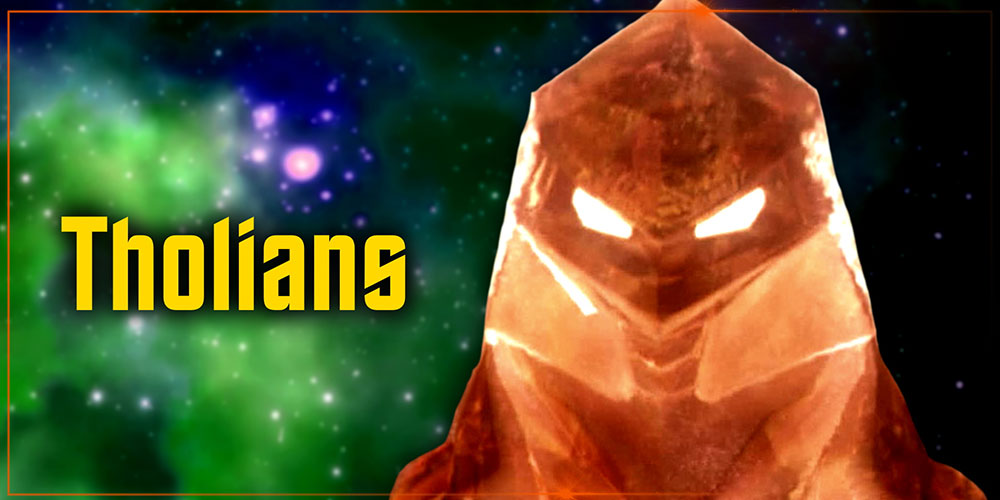Star Trek, like many other science fiction franchises, is known for being populated by lots of rather humanoid-looking aliens. Often, members of species we meet on screen are played by actors wearing different colours of body paint or with facial ridges to distinguish them from Homo sapiens.
But even in The Original Series, multiple attempts were made to depict, at least every once in a while, aliens that are truly unlike any intelligent life on Earth. One fantastic example is the Tholian species. Having only appeared in THREE EPISODES of Star Trek over more than five decades, in addition to fourteen other references in dialogue, the Tholians nonetheless are what I’d consider a pretty major Alpha Quadrant power, and their unique crystalline structure makes them stand out compared to even other non-humanoid species.
Today, I’ll discuss what we know about the Tholians’ biology as well as their history and culture and compare them to our expectations about silicon-based life in our universe. I’ll also speculate about their apparent involvement in the Temporal Cold War and what the future might hold for their relations with the Federation and other powers. This is Everything We Know About the Tholians.
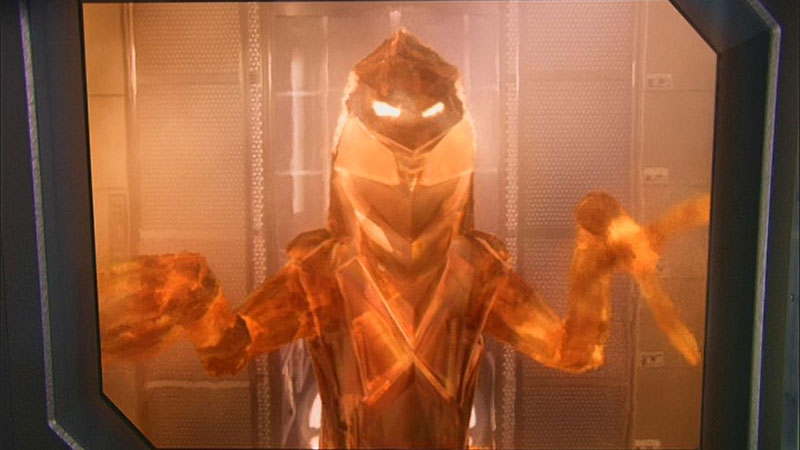
Biology
As Doctor Phlox—or, rather, his mirror counterpart—remarked, Tholians have “rather extreme life support requirements.” They tend to thrive in temperatures registering 480 Kelvin, though when exposed to temperatures below 380 Kelvin, their reddish mineral-like shells—or carapaces—tend to fracture, causing intense pain. Below that, they…shatter. A murky fluid also flows through their carapaces and presumably carries out metabolic processes.
They have six legs attached to their torso in a radially symmetrical pattern. This arrangement of legs and feet, accompanied by joints analogous to humanoid knees, allows them to quickly move in any direction. They also have two arms with joints analogous to elbows and wrists and multi-fingered hands on the end of each arm, allowing them to manipulate objects. Like many other intelligent species, their head is atop their torso, and they have glowing jewel-like sensory organs that, while never explicitly stated to be eyes, likely serve a similar function. Oh, and they also produce silk, which is a prized commodity in the Alpha Quadrant.
Tholians are not the only life forms in Star Trek that function on biochemistry besides carbon. But that they are, in fact, silicon-based is a notion formulated by puppeteer Mike Minor, who designed the first Tholian saw on screen, Loskene, in The Original Series episode “The Tholian Web.” Silicon has long been discussed as a possible alternative to carbon for biochemistry due to both elements’ similarities.
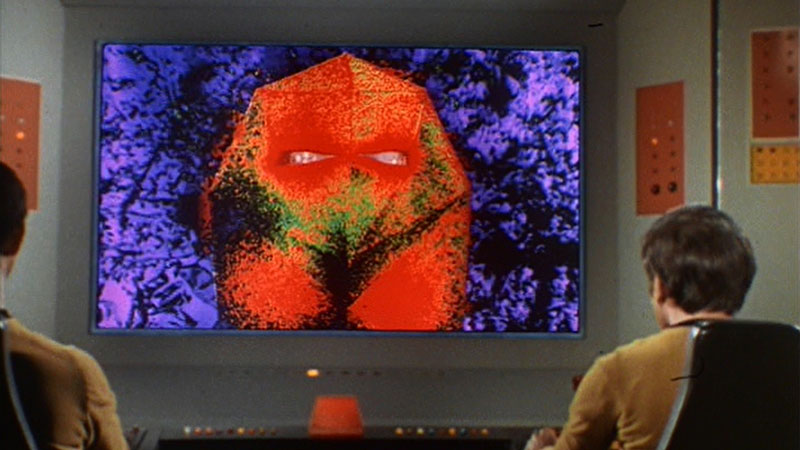
They share many chemical properties and are in the same group on the periodic table, both having four valence electrons—electrons in their outer shell—and being able to form molecules large enough to transmit biological information. While there are fewer types of atoms silicon can bond with compared to carbon, silicon-oxygen bonds—called silicones, as in the stuff used in caulk—are expected to be more stable than hydrocarbons in sulfuric acid environments. While we don’t know if Tholian biochemistry makes use of sulfuric acid per se, silicones would be better suited to withstand intense radiation and pressure on very hot planets.
The cosmic abundance of carbon versus silicon, such as in molecules identified in the interstellar medium, is roughly 10 to 1. This suggests that silicon-based life is probably rare in the universe, which makes sense—but if there are roughly one million M-class Earthlike worlds in Star Trek’s Milky Way, then that means there’d be up to 100,000 planets with conditions conducive to silicon-based life. In fact, believe it or not, there’s actually a type of algae called diatoms that make use of silicon in their anatomy.
Diatom cell walls are made of silica, a.k.a. silicon dioxide or quartz—the same molecule that makes up most sand grains on our planet. Silica is a non-ionic compound in the silicate family, which includes minerals found in Earth’s crust and mantle as well as other terrestrial planets, moons, and asteroids. Thus, it would be not totally inaccurate to call the Tholians and other silicon-based life forms “living rocks,” or at the very least, “living crystals.”
The Tholians are also shown to be able to emit various forms of radiation, which they can use to communicate over short distances. This is in addition to their primary form of communication through a series of chirps and clicks. In this way, the Tholians are able to interact with the natural electrical fields of their surroundings, nourishing themselves through a form of anaerobic respiration. Information on the Tholian lifespan is evidently limited to novels, but these novels indicate that Tholians reproduce rather quickly.
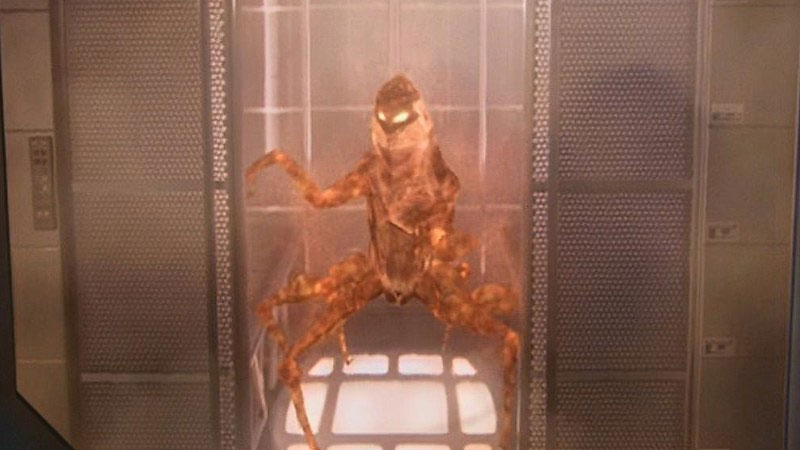
This reproduction, however, is more like a form of cloning, with memories and consciousness from the parent—who possesses both male and female sex organs—being transferred from one generation to the next. Mating rituals also reportedly involve three individuals to contribute genetic material. While the novel The Sundered depicts Tholians living for only six to eight months, the novel Vendetta indicates they perceive time at a different rate than most humanoids, meaning their subjective lifespan is quite long. The Sundered also claims Tholians possess a form of networked intelligence on top of their individuality. This telepathic network is known as “the Lattice” and is distinguished from the traditional conception of a “hive mind,” as Tholians are able to choose who they share memories with.
As far as their homeworld, Tholia, not much is known about it. Various reference materials characterize it as a Class Y planet with a toxic atmosphere, sulfuric deserts, and high temperatures—right at home for them. Such planets may actually be rather abundant in the universe, as planets with temperatures hotter than Venus and Mercury have been catalogued. In any case, Tholia’s atmosphere is said to contain a chlorine-methane compound.
Methane is a type of hydrocarbon with a cosmic abundance similar to ammonia. In its liquid form, methane has been observed on the frozen surface of Titan, and like ammonia, silicon dioxide, and sulfuric acid, is suspected as a possible alternative solvent besides water for biochemical reactions. Other possible solvents include formamide, hydrogen chloride, hydrogen fluoride, hydrogen sulfide, liquid hydrogen and nitrogen, methyl alcohol, and sodium chloride, among others. But even in its gaseous form, methane is technically a greenhouse gas, and thus it may indeed function as a respiratory chemical in environments with temperatures far too hot for Earthlike life.
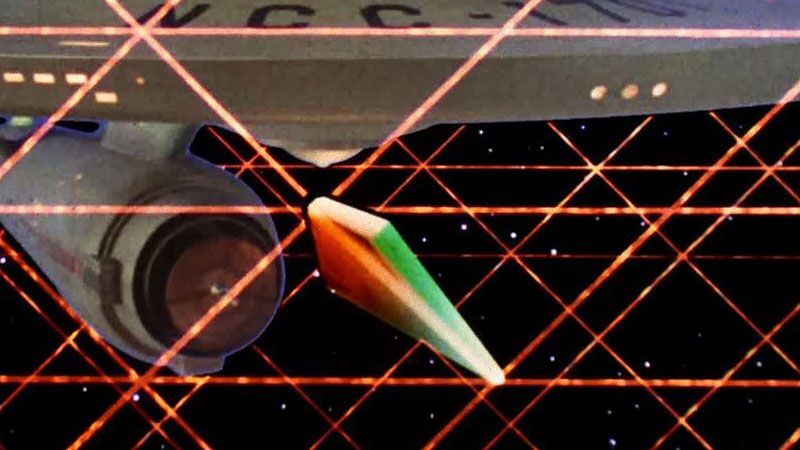
Tholian History & Culture
The interstellar government of the Tholians is known as the Tholian Assembly. Residing in the Alpha Quadrant, Tholian territory covers hundreds of light-years and includes systems such as Omicron Cephei. According to reference materials, it is the third-largest entity in local space behind the Federation and Klingon Empire, with the Breen Confederacy coming in fourth. As we learn in Enterprise, until the 2150s, the Vulcan High Command had only limited contact with the Tholian Assembly, though this changed as Starfleet begins to venture near their space. The Tholians come off as aggressive and territorial on several occasions.
They are known to annex systems beyond their core territories and kill outsiders who enter Tholian space without their consent. This would result in numerous conflicts, including surprise attacks, on the Federation and other targets over the centuries. However, despite their relative isolationism and their xenophobic reputation, Tholians are not entirely unreasonable. For example, we see in “The Tholian Web” that they allow the crew of the Enterprise NCC-1701 to rescue James T. Kirk from the USS Defiant. That is until the Enterprise’s allotted time limit is up…then, the Tholians open fire. Indeed, the Tholians highly value punctuality as well as honesty and accuracy in their relationships.
The seat of power in the Tholian Assembly, naturally, is Tholia. Star Trek: Star Charts and Stellar Cartography: The Starfleet Reference Library depict Tholia as orbiting a B-type blue giant star, which if true, does present some complications. You see, B-type stars are among the hottest in the known universe, so they burn through their hydrogen at a faster rate than other stars. Consequently, they have very short lifespans—only millions of years, compared to the billions our sun is expected to live. While life on Earth did appear within the first 850 million years of our planet’s existence, this…is actually far longer than the lifespans of many massive blue stars, which can burn out as quickly as TEN million years.
Thus, if Tholia really does orbit a blue giant, while evolution could be faster due to more intense starlight, it’s still incredibly likely that the Tholians did not naturally evolve on the planet. Indeed, this is actually the explanation used in the Vanguard novel series—the Tholians were engineered by a mysterious race known as the Shedai about 100,000 years ago. The Shedai were nonhumanoid shapeshifters with a similar genetic structure to the Tholians. Through the use of mind control, they used the Tholians as slave labour until the Shedai voluntarily went into hibernation.
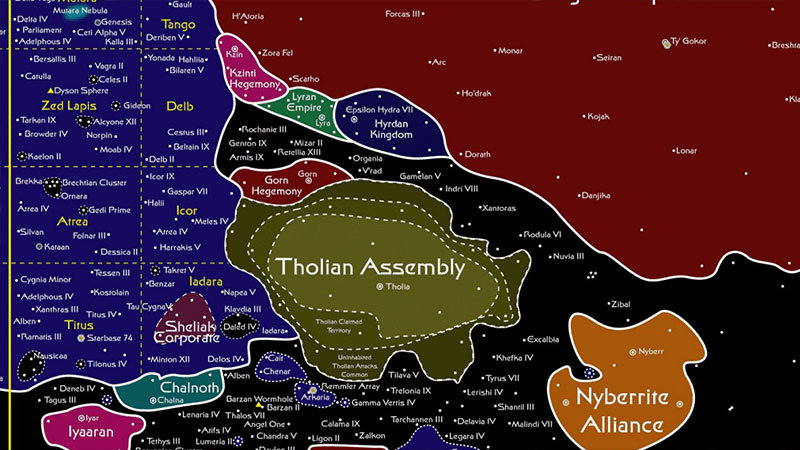
As far as their society, various reference materials further describe the Tholians as having a caste society, with most Tholians encountered by Starfleet being members of the warrior caste, just as with the Klingons. Novels depict their government as a federal republic with various levels of bureaucracy headed by High Magistrates and governed by a Ruling Conclave. The Tholians’ participatory collective consciousness allows each adult to have some kind of sway in government affairs, though the rigidity of the caste system still marks their culture as distinctly authoritarian. Tholians are bred for specific purposes and trained from birth to perform various functions in their society. Tholians’ tendency to annex systems also sees them conquer humanoids and other intelligent species to serve as part of a labour class.
This is first confirmed in canon in the Enterprise episode “In a Mirror, Darkly,” and though this episode is set in the mirror universe, it’s not unlikely the same dynamic applies to the prime universe. As subjects of the Roman Empire, various conquered peoples are viewed as citizens of the Assembly, not just slaves. Nevertheless, subjects of the Tholian Assembly are viewed as inherently lesser than Tholians themselves, as they hold negative views towards carbon-based life.
Regardless of their internal politics and occasional skirmishes with other powers, the Tholians do engage in trade and diplomacy with their neighbours. Tholian ambassadors and observers are mentioned multiple times, including a diplomatic mission aboard Deep Space 9. The Tholians do, however, sign a nonaggression pact with the Dominion, which invades the Alpha Quadrant in the 2370s. Presumably, relations between the Assembly and the Federation remain tense.
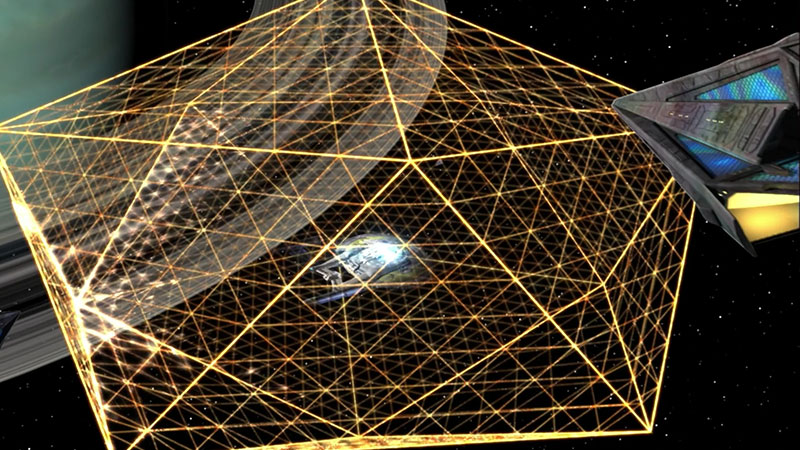
Technology
Tholian starships are notably shaped like triangular prisms, and their small size makes them highly agile. They are outfitted with powerful weaponry, including energy-dampening weapons that can render an enemy vessel almost completely powerless. These ships are also capable of generating a tractor field called a “Tholian web,” which can trap vessels in a manner similar to the way spiders trap prey in their webs.
Hey…that’s a pretty damn cool design choice for their technology, given that they appear spider-like to begin with. Anyway, these webs are actually immune to outgoing weapons fire such as photonic torpedoes, though ships outside the web can fire inside without any hindrance. Also, the more ships available to “spin” the web, the faster it generates. The only way to escape it is to fire on one or more of the ships generating the web before it’s finished.
In addition to their spacefaring vessels and weapons systems, however, another kind of technology the Tholians like to dabble in is that of a temporal nature. In fact, the Enterprise NX-01’s first encounter with the Tholians in 2152 is after the NX-01 retrieves a small craft adrift in space that’s apparently from the future. As the Tholians try to capture this timeship, this could indicate that they are a faction in the Temporal Cold War.
For those unfamiliar, the Temporal Cold War is a conflict fought between various factions across several centuries in an effort to manipulate history to its own ends. I made a video years ago where I provide an overview of the Temporal Cold War—link in the description if you’re interested. Tholians’ involvement in the Temporal Cold War seems to be in opposition to the Suliban Cabal, though their alignment with any other factions is unknown.
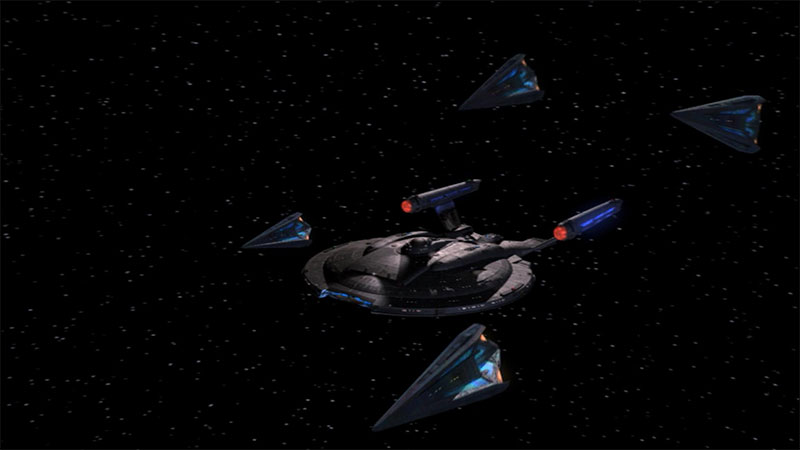
However, in Star Trek Online, the Tholians use the Tox Uthat, a quantum phase inhibitor, to destroy the Na’kuhl star. The Na’kuhl are, of course, the faction that temporarily allied with Nazi Germany in the Enterprise episode “Storm Front.” Bad dudes. One mission in Star Trek Online also depicts the Tholians as being “just as opportunistic and xenophobic” in the late 27th century, according to one Federation scientist.
Thus, I think it’s safe to say that the Tholians are a species whose rigid customs perpetually place them at odds with the Federation, meaning their capacity for membership is incredibly limited if not totally nonexistent. They harbour a deep disdain for carbon-based life, though their adversarial nature still does not preclude them from, as I mentioned, engaging in trade and diplomacy…so perhaps there’s hope for a peaceful future, if rocky, after all.
Final Thoughts
The Tholians are certainly one of the more interesting Star Trek species from a pure design perspective. Their nonhumanoid appearance and completely alien biochemistry make them a rare gem, if you will, among the teeming swaths of carbon-based life in the Milky Way Galaxy. Their isolationism also makes them a more intimidating enemy, as they are only as involved in galactic affairs as they wish to be—no one’s forcing their hand—and they can easily ally with any of the Federation’s adversaries at any given time.
The Tholians are very deliberate with all their actions. They’re playing the long game—they may be one of the last interstellar entities standing when all’s said and done. There’s also no doubt that they possess a keen interest in the inner workings of spacetime. We know they can manipulate interphasic fields to interact with other universes, so who’s to say that they aren’t aware of multiple possible futures and aren’t receiving secret assistance from other factions in the Temporal Cold War? Something to think about.
In the meantime, thanks for watching! I’m interested to hear your thoughts in the comments. If you haven’t yet subscribed, be sure to do that as well so you won’t miss future uploads and click the bell icon to receive all notifications. If you want to support my work even further, becoming a patron at patreon.com/orangeriver is a great way to do so.
Watch The Latest Video By Orange River Media Below
I’ll see you in the next video…live long and prosper.
You can find Orange River Media at the links below
- YouTube: https://www.youtube.com/orangeriver
- Twitter: https://www.twitter.com/orangerivernw
- Instagram: https://www.instagram.com/orangeriver.nw
- Facebook: https://www.facebook.com/orangerivernw
- Patreon: https://www.patreon.com/orangeriver

